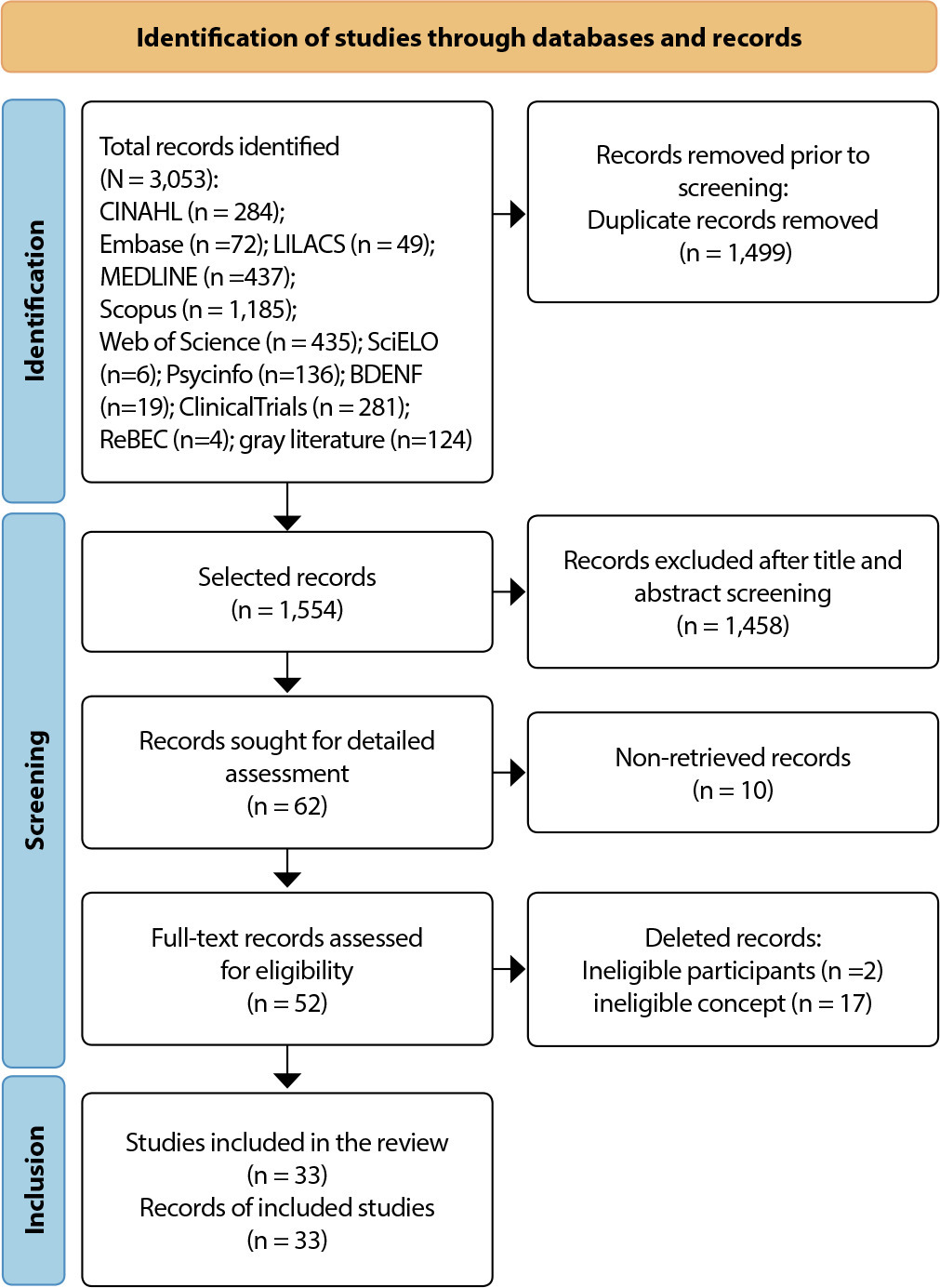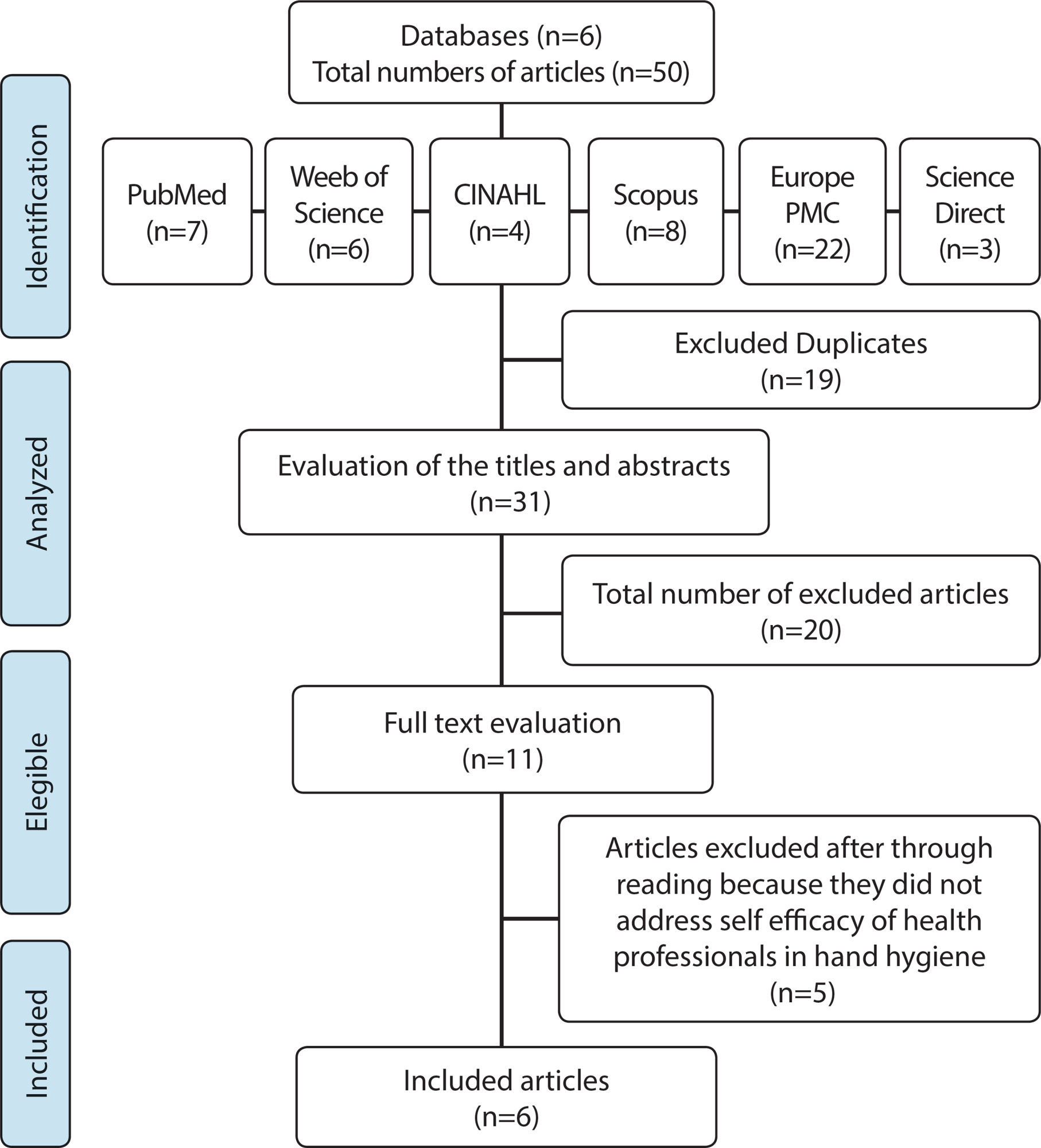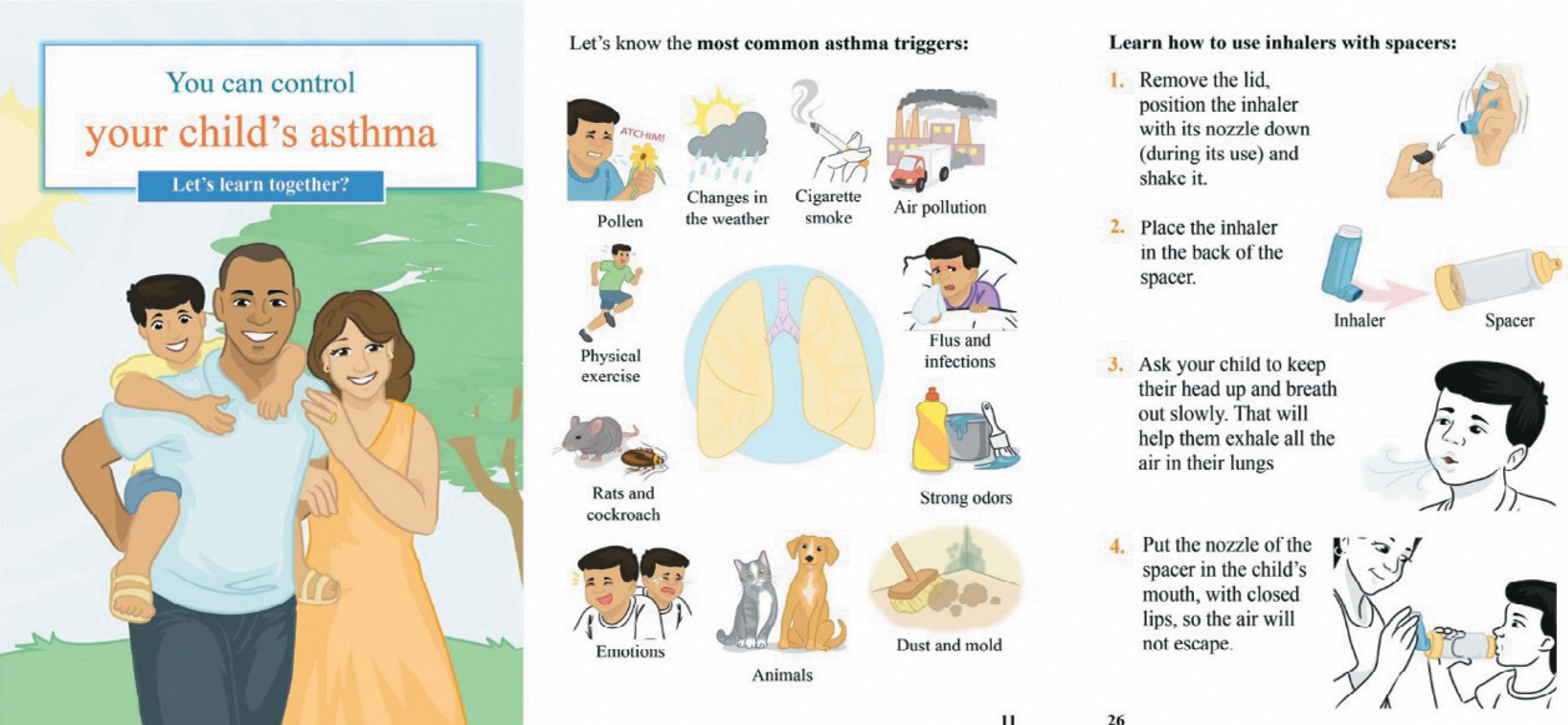-
EXPERIENCE REPORT11-27-2023
Implementation of a nursing strategy for self-transcendence in older adults: an experience report
Revista Brasileira de Enfermagem. 2023;76(5):e20220745
Abstract
EXPERIENCE REPORTImplementation of a nursing strategy for self-transcendence in older adults: an experience report
Revista Brasileira de Enfermagem. 2023;76(5):e20220745
DOI 10.1590/0034-7167-2022-0745
Views0See moreABSTRACT
Objectives:
to report the experience of implementing a nursing strategy to promote self-transcendence in older adults attended at a Primary Health Care center.
Methods:
an experience report on the implementation of a strategy addressing the Theory of Self-Transcendence by nursing to older adults in a primary health unit, in San Luis Potosí, Mexico, from October to November 2022.
Results:
fourteen older adults and three nurses participated. From the expression of feelings, speeches about self-transcendence, spirituality and physical activity promotion, the strategy was satisfactory. Emotional, cognitive and spiritual changes were observed in the different dimensions of the Theory of Self-Transcendence.
Final Considerations:
the nursing strategy on self-transcendence made it possible to identify significant moments that helped to identify the key points in which older adults were; it helped to intervene from a person-to-person care perspective.
-
ORIGINAL ARTICLE11-27-2023
Validation of the hospital resources assessment scale for the preservation of urinary continence in the elderly
Revista Brasileira de Enfermagem. 2023;76(5):e20220805
Abstract
ORIGINAL ARTICLEValidation of the hospital resources assessment scale for the preservation of urinary continence in the elderly
Revista Brasileira de Enfermagem. 2023;76(5):e20220805
DOI 10.1590/0034-7167-2022-0805
Views0See moreABSTRACT
Objectives:
to validate the internal structure of the Hospital Resources Assessment Scale for the Preservation of Urinary Continence in the Elderly.
Methods:
validation study of the internal structure of a scale constructed based on the Donabedian conceptual model and an integrative review, with prior content validation. The scale was applied to the target population, and 124 nurses responded to the questionnaire. Exploratory Factor Analysis was performed using the FACTOR software, employing multiple techniques.
Results:
a factorial model with 11 items organized into two dimensions (support for human resources and material resources) was obtained. The “physical structure” dimension was removed from the initial model and adopted as a complementary checklist to the instrument, as it was not possible to obtain a factorable model with this dimension.
Conclusions:
we provide a valid scale that can measure indicators, identifying weaknesses and/or strengths related to hospital resources for the preservation of urinary continence in the elderly.

-
REVIEW11-27-2023
Educational interventions for cervical cancer prevention: a scoping review
Revista Brasileira de Enfermagem. 2023;76(5):e20230018
Abstract
REVIEWEducational interventions for cervical cancer prevention: a scoping review
Revista Brasileira de Enfermagem. 2023;76(5):e20230018
DOI 10.1590/0034-7167-2023-0018
Views0See moreABSTRACT
Objectives:
to identify, map and describe characteristics of educational interventions for cervical cancer prevention in adult women.
Methods:
a scoping review conducted on eleven databases and the gray literature, including studies that described educational interventions aimed at preventing cervical cancer in adult women.
Results:
thirty-three articles with 151,457 participants were analyzed. The most used educational strategies were participatory discussions and educational leaflets. Most of the interventions took place in a single session, ranging from 40 to 60 minutes. The most used theoretical model in interventions to improve women’s compliance with Pap smear was the Health Belief Model.
Conclusions:
group discussions, lectures and educational brochures can increase knowledge and reduce barriers to cervical cancer prevention. Theory-based and culturally sensitive interventions can have a positive impact on women’s health.

-
ORIGINAL ARTICLE11-27-2023
Mental suffering in family daily life: a temporal journey according to Merleau-Ponty
Revista Brasileira de Enfermagem. 2023;76(5):e20230258
Abstract
ORIGINAL ARTICLEMental suffering in family daily life: a temporal journey according to Merleau-Ponty
Revista Brasileira de Enfermagem. 2023;76(5):e20230258
DOI 10.1590/0034-7167-2023-0258
Views1See moreABSTRACT
Objectives:
to describe the family’s experience in relation to daily life with a family member experiencing mental suffering.
Methods:
a qualitative, descriptive, phenomenological study grounded in Merleau-Ponty’s ontology of experience was conducted in ten households in a city in the state of Bahia, Brazil, where 24 participants of the Intersubjectivity Wheels reside. The descriptions produced were subjected to the Ambiguity Analytics technique.
Results:
the descriptions were categorized into: absence as a creative power of the sense of “being” and “not being a family”; and exclusion and acceptance as expressions of mental suffering in the family context.
Final Considerations:
the experience of mental suffering in the family’s daily life is marked by ambiguous feelings, such as joy and sadness, disappointment and satisfaction, lack of love and love. However, experiencing these feelings can mobilize the desire to “become” a family, increase the sense of autonomy and independence, and drive the formation of new family configurations.
-
ERRATUM11-27-2023
ERRATUM
Revista Brasileira de Enfermagem. 2023;76(5):e2023n5e05
Abstract
ERRATUMERRATUM
Revista Brasileira de Enfermagem. 2023;76(5):e2023n5e05
DOI 10.1590/0034-7167.20237605e05
Views0In the article “Performance of Family Health Strategy Nurses in LGBT+ Healthcare”, with DOI number: , published in Revista Brasileira de Enfermagem, 2023;76(4): e20220514, authored:Where it read:[…]See more -
ORIGINAL ARTICLE11-21-2023
Coping strategies for chronically ill children and adolescents facing the COVID-19 pandemic
Revista Brasileira de Enfermagem. 2023;76:e20230045
Abstract
ORIGINAL ARTICLECoping strategies for chronically ill children and adolescents facing the COVID-19 pandemic
Revista Brasileira de Enfermagem. 2023;76:e20230045
DOI 10.1590/0034-7167-2023-0045
Views0See moreABSTRACT
Objective:
to understand the experiences and coping strategies of children and adolescents with chronic illnesses during the COVID-19 pandemic.
Methods:
a descriptive study, with a qualitative approach, carried out with six children and adolescents at the reception of an outpatient clinic of a pediatric hospital in the state of Ceará. Data collection took place from April to September 2021, using story-drawing, analyzed in light of Coutinho’s criteria.
Results:
two thematic categories emerged: Situations experienced by children and adolescents in times of COVID-19; Coping strategies for children and adolescents in their chronic illness process during the COVID-19 pandemic.
Final considerations:
understanding the experiences and coping strategies of children and adolescents with chronic illness demonstrated the expression of creative imagination, incorporated by subjective components, which brings to light an approximation with the reality perceived and interpreted in a context of the COVID-19 pandemic.
-
ORIGINAL ARTICLE11-13-2023
Vulnerability to physical inactivity: evidence of content validity and response processes
Revista Brasileira de Enfermagem. 2023;76:e20220563
Abstract
ORIGINAL ARTICLEVulnerability to physical inactivity: evidence of content validity and response processes
Revista Brasileira de Enfermagem. 2023;76:e20220563
DOI 10.1590/0034-7167-2022-0563
Views0See moreABSTRACT
Objective:
To analyze content validity evidence and response processes of a bank of items for measuring vulnerability to physical inactivity in adults.
Method:
Methodological study, with 13 specialists and 46 representatives of the target population. The Content Validity Index (CVI) and binomial test were calculated; data obtained through validity based on response processes were collected through interviews.
Results:
Of the 105 constructed items, 16 were excluded (CVI<0.78); 89 items showed agreement <80% in the psychometric criteria, being modified. Of the 101 items that remained (CVI>0.78), 34 were changed and 4 were deleted after evaluating the evidence of response processes. In the end, 97 items remained, with a global CVI of 0.92, organized into two dimensions: Subject (CVI=0.91) and Social (CVI=0.94).
Conclusion:
The items presented adequate parameters and evidence of validity; and can subsidize the construction of instruments that consider the subject’s and social vulnerability in understanding physical inactivity.
-
ORIGINAL ARTICLE11-13-2023
Access of people with pulmonary tuberculosis to government programs: Primary Care professionals’ perceptions
Revista Brasileira de Enfermagem. 2023;76:e20220716
Abstract
ORIGINAL ARTICLEAccess of people with pulmonary tuberculosis to government programs: Primary Care professionals’ perceptions
Revista Brasileira de Enfermagem. 2023;76:e20220716
DOI 10.1590/0034-7167-2022-0716
Views0See moreABSTRACT
Objective:
to analyze Primary Health Care professionals’ perceptions about the access of people with pulmonary tuberculosis to government social support and income transfer programs.
Methods:
multicenter/qualitative study, carried out in Family Health Units in four Brazilian capitals: Belém/Pará, Campo Grande/Mato Grosso do Sul, Recife/Pernambuco and Rio de Janeiro/Rio de Janeiro. Fifty-eight professionals participated (social workers, dentists, nurses, pharmacists, physicians and nursing technicians), who provided assistance to people with pulmonary tuberculosis. Individual interviews were conducted, and the content analysis technique was used.
Results:
among the participants, 45/77.6% were women and 33/56.9% were between 25 and 40 years old. Two thematic categories were organized, demonstrating the perceptions about the possibilities of access to government programs by people with pulmonary tuberculosis in vulnerable situations and the obstacles inherent to this context.
Final considerations:
it is necessary to move forward in improving patient access to social programs.
-
ORIGINAL ARTICLE09-29-2022
Incidence of acute radiodermatitis in women with breast cancer undergoing hypofractionated radiotherapy
Revista Brasileira de Enfermagem. 2022;75(1):e20210118
Abstract
ORIGINAL ARTICLEIncidence of acute radiodermatitis in women with breast cancer undergoing hypofractionated radiotherapy
Revista Brasileira de Enfermagem. 2022;75(1):e20210118
DOI 10.1590/0034-7167-2021-0118
Views0See moreABSTRACT
Objective:
To estimate the incidence and degree of acute radiodermatitis at the end and after the end of treatment in women with breast cancer undergoing hypofractionated radiotherapy.
Methods:
Observational, prospective, and longitudinal study, conducted between March 2019 and January 2020, in a radiotherapy outpatient clinic.
Results:
Thirty-two women participated in the study, among whom, in the last session of hypofractionated radiotherapy, 15 (46.9%) had radiodermatitis, erythema in 13 (40.6%), and wet peeling in 2 (6.3%). In the post-treatment evaluation, 27 (84.4%) had radiodermatitis, erythema in 17 (53.1%), dry peeling in 8 (25%), and wet peeling in 2 (6.3%).
Conclusion:
The general incidence of radiodermatitis after hypofractionated radiotherapy in women with breast cancer was 37.5%, erythema, 12.5%, and dry peeling, 25%. The development of care protocols for the management of radiodermatitis after treatment is of paramount importance.
-
ORIGINAL ARTICLE04-03-2020
Organizational culture: prevention, treatment, and risk management of pressure injury
Revista Brasileira de Enfermagem. 2020;73(3):e20180510
Abstract
ORIGINAL ARTICLEOrganizational culture: prevention, treatment, and risk management of pressure injury
Revista Brasileira de Enfermagem. 2020;73(3):e20180510
DOI 10.1590/0034-7167-2018-0510
Views0See moreABSTRACT
Objectives:
To identify the facilitating and complicating factors for the prevention and treatment of pressure injury (PI) in the management of hospitalized patient care.
Methods:
This is a cross-sectional study, conducted with 197 nursing professionals in three public hospitals.
Results:
Among the identified factors, it is noteworthy that 59% of respondents are unaware of the PI prevention protocol, 27% do not use clinical evaluation for daily sizing of professionals, more than 52% believe that no facilitating elements exist, and 76% argue that there are complicating elements for the prevention of PI. As for the treatment, a little over 60% reported that the patient and the injury are evaluated by nurses, with 54% of the procedures being prescribed by the physician and 46% of the therapy being performed by nursing technicians.
Conclusions:
We conclude that the prevention and treatment of PI require shared management, with integrated actions among the care executors.
-
ORIGINAL ARTICLE03-07-2022
Is self-esteem associated with the elderly person’s quality of life?
Revista Brasileira de Enfermagem. 2022;75:e20210388
Abstract
ORIGINAL ARTICLEIs self-esteem associated with the elderly person’s quality of life?
Revista Brasileira de Enfermagem. 2022;75:e20210388
DOI 10.1590/0034-7167-2021-0388
Views0See moreABSTRACT
Objective:
To analyze the association between self-esteem and quality of life in the elderly.
Methods:
Cross-sectional web survey developed with 519 elderly people. Participants filled out three data collection instruments developed on the Google Forms platform and widely disseminated through all of Brazil. Fisher’s exact test, Mann-Whitney, Pearson correlation, and linear regression with 95% confidence interval were used.
Results:
Self-esteem was associated with all quality-of-life facets: sensory skills [β= 1.307; p<0.001]; autonomy [β= 2.101; p<0.001]; past, present, and future activities [β= 2.486; p<0.001]; social presence [β= 2.547; p<0.001]; death and dying [β= 2.175; p<0.001]; and intimacy [β=2.378; p<0.001].
Conclusion:
There is a positive and statistically significant association between self-esteem and quality of life in the elderly. We therefore suggest the development of local policies capable of raising this age groups’ self-esteem and reaffirming aging as a new possibility for discoveries and pleasure.
-
REVIEW10-05-2020
Self-efficacy of health professionals in hand hygiene practice: is it possible to measure?
Revista Brasileira de Enfermagem. 2020;73:e20190873
Abstract
REVIEWSelf-efficacy of health professionals in hand hygiene practice: is it possible to measure?
Revista Brasileira de Enfermagem. 2020;73:e20190873
DOI 10.1590/0034-7167-2019-0873
Views0See moreABSTRACT
Objective:
To identify in the literature the tools used to measure self-efficacy of health professionals in hand hygiene.
Methods:
Integrative literature review carried out by consulting the databases PubMed, Scopus, Web of Science, Cumulative Index to Nursing and Allied Health Literature, Europe PubMed Central, and Science Direct using the descriptors Self Efficacy, Hand Hygiene, and Health Personnel.
Results:
Six articles, all of which with observational design, were selected. It was possible to infer that four studies used validated instruments to measure self-efficacy of health professionals in the conformity with the recommendations for hand hygiene. The other studies used questionnaires that were not validated.
Final considerations:
Despite the extensive literature on hand hygiene, there is a lack of scientific evidence regarding the use of validated instruments to measure self-efficacy of health professionals in the procedure. The use of properly validated psychometric instruments is useful to guarantee the quality of results in studies.

-
ORIGINAL ARTICLE05-24-2021
Content validation of an educational booklet for asthma control and management in children
Revista Brasileira de Enfermagem. 2021;74:e20200353
Abstract
ORIGINAL ARTICLEContent validation of an educational booklet for asthma control and management in children
Revista Brasileira de Enfermagem. 2021;74:e20200353
DOI 10.1590/0034-7167-2020-0353
Views0See moreABSTRACT
Objective:
to validate the content and appearance of the educational booklet “You can control your child’s asthma – let’s learn together?” with parents and caregivers of children with asthma.
Methods:
this is a methodological study, carried out with 34 mothers and caregivers of children, from two to 10 years old, diagnosed with asthma. The educational booklet validation was performed using Content Validity Index (CVI) and assessment of comprehension, attractiveness, self-efficacy, persuasion, and cultural acceptance domains.
Results:
the booklet was considered clear (99.8%) and relevant (100%), with a global CVI of 0.99. Domain assessment proved to be an easy-to-understand tool, culturally appropriate, attractive, with persuasive power and promoting self-efficacy.
Conclusion:
the booklet is valid and adequate for promoting the self-efficacy of parents and caregivers in childhood asthma control and management, potentially scalable to other realities of outpatient care.

-
07-05-2021
Factors associated with urinary tract infection in a Nursing Home
Revista Brasileira de Enfermagem. 2021;74:e20200813
Abstract
Factors associated with urinary tract infection in a Nursing Home
Revista Brasileira de Enfermagem. 2021;74:e20200813
DOI 10.1590/0034-7167-2020-0813
Views1See moreABSTRACT
Objective:
to analyze the factors associated with urinary tract infection occurrence in institutionalized elderly.
Methods:
this is a cross-sectional, analytical, quantitative study with 116 elderly people from a Nursing Home. Urinary tract infection diagnosis was carried out through urine culture and clinical assessment. Demographic data and associated factors were obtained from medical records. Statistical analysis included bivariate analysis and logistic regression models.
Results:
the factors associated with urinary tract infection (p<0.05) were being female; wheelchair user; diaper use; diuretic use; urinary and bowel incontinence; type 1 diabetes; benign prostatic hyperplasia; dehydration.
Conclusion:
this study revealed that it is important to consider non-modifiable factors such as sex and clinical comorbidities; however, dehydration, a modifiable factor, increased the chances of developing urinary tract infections by 40 times among institutionalized elderly and demands greater attention from the health team.
-
REFLECTION02-22-2021
Convergent care research and its qualification as scientific research
Revista Brasileira de Enfermagem. 2021;74(1):e20190657
Abstract
REFLECTIONConvergent care research and its qualification as scientific research
Revista Brasileira de Enfermagem. 2021;74(1):e20190657
DOI 10.1590/0034-7167-2019-0657
Views0See moreABSTRACT
Objectives:
to highlight the main attributes of Convergent Care Research that ratify it as a method of scientific research. Methods: it is a theoretical-reflective study on Convergent Care Research’s theoretical-methodological assumptions. Development: Convergent Care Research is compatible with the Social Constructionism paradigm. Convergent Care Research projects have two approaches: practical and conceptual. The Convergent Care Research process corpus contains five phases: conception; instrumentation; scrutiny; analysis and theorizing. Final Considerations: Convergent Care Research rigor encompasses the relationship between research and care practice, and this corresponds to the convergence of these two dimensions. Due to its theoretical foundation and criteria of methodological rigor, Convergent Care Research is aligned with scientific research methods.
-
EXPERIENCE REPORT06-11-2021
Care management in coping with COVID-19 at a teaching hospital
Revista Brasileira de Enfermagem. 2021;74:e20200970
Abstract
EXPERIENCE REPORTCare management in coping with COVID-19 at a teaching hospital
Revista Brasileira de Enfermagem. 2021;74:e20200970
DOI 10.1590/0034-7167-2020-0970
Views0See moreABSTRACT
Objective:
to report the experience of implementing care management strategies in coping with the COVID-19 pandemic in a teaching hospital.
Method:
this is an experience report of the managers who work at the largest public hospital in Paraná with functions as Head of the Care Management Division, Head of the Care Lines Management Sector, Head of the Infectiology Unit and support team.
Results:
care management strategies were structured based on the service dynamics; physical structure; human Resources; professional and user safety.
Final considerations:
preparing for a pandemic involves measures that include modifying infrastructure and processes, managing employees and users, infection prevention strategies, and clinical recommendations. These measures are necessary to optimize the quality of care provided to users with COVID-19 and to reduce the risk of viral transmission to other users or health professionals.
Search
Search in:
Nuvem de Tags
Adolescente (85) Atenção Primária à Saúde (239) COVID-19 (91) Criança (91) Cuidados de Enfermagem (269) Educação em Enfermagem (151) Educação em Saúde (139) Enfermagem (930) Enfermagem Pediátrica (86) Estudantes de Enfermagem (77) Estudos de Validação (131) Família (87) Idoso (208) Promoção da Saúde (99) Qualidade de Vida (104) Saúde do Trabalhador (86) Saúde Mental (145) Saúde Pública (82) Segurança do Paciente (150) Tecnologia Educacional (100)



